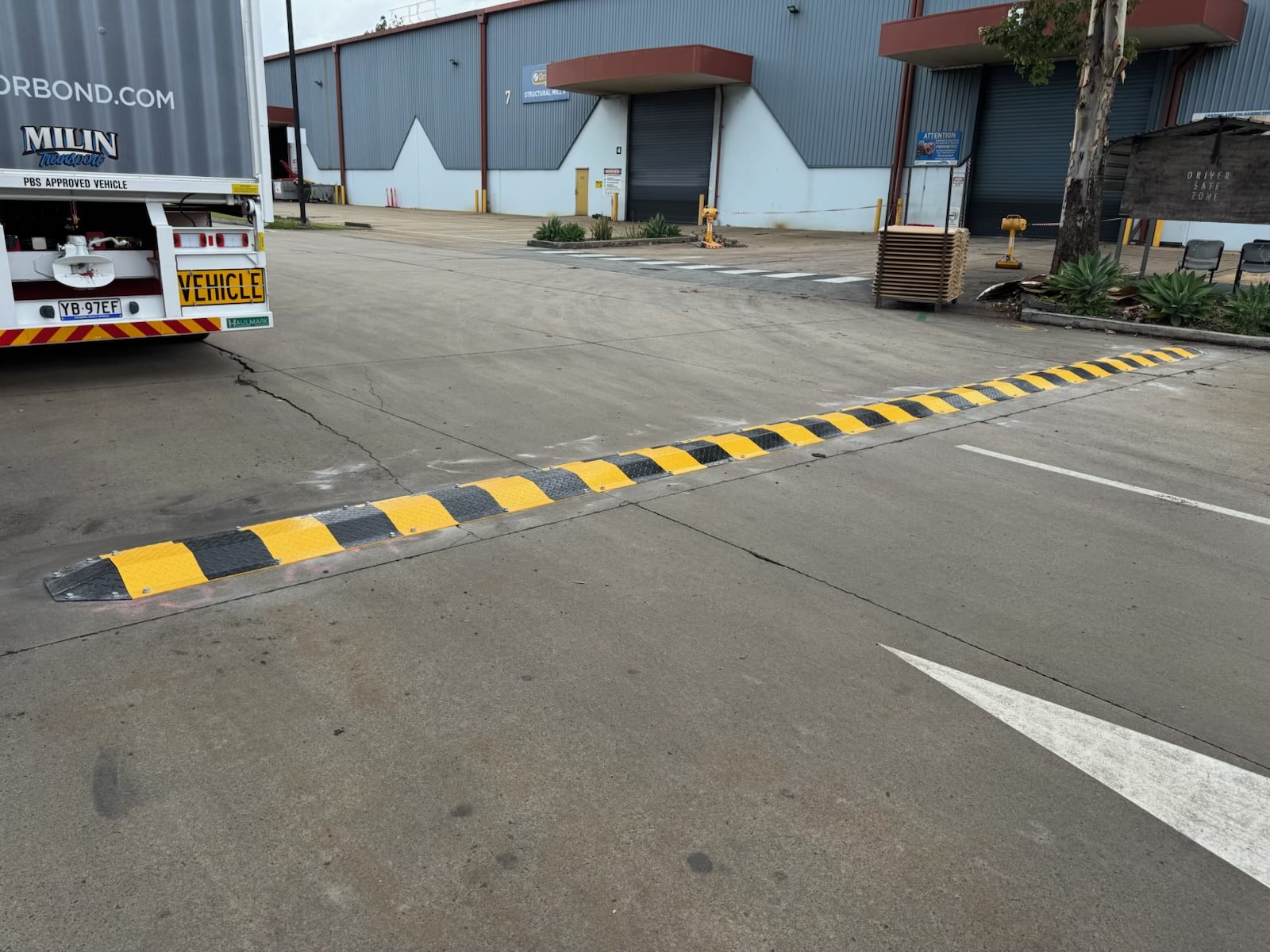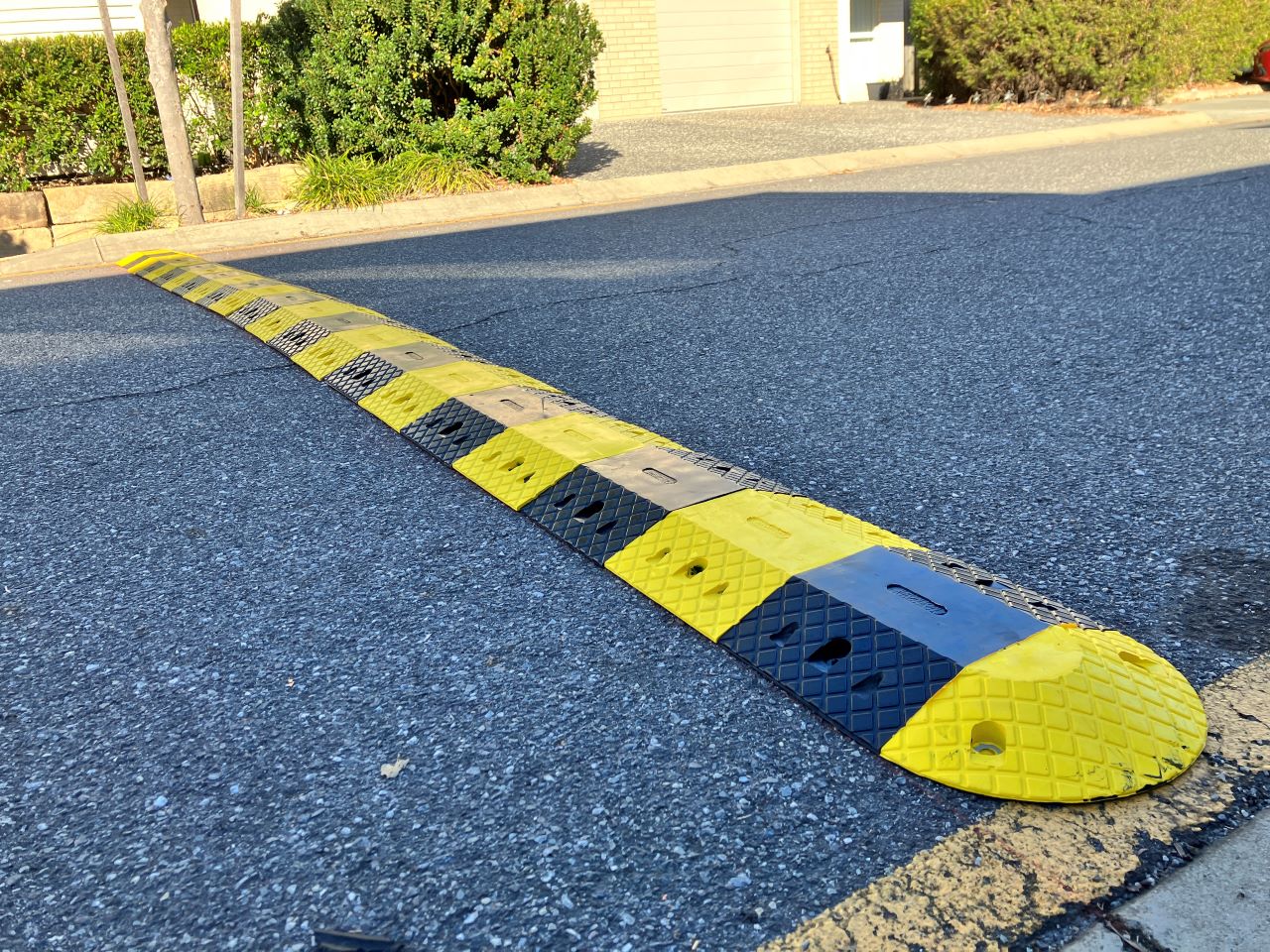

When it comes to traffic control and road safety, speed humps play a crucial role. These unassuming structures are designed to slow down vehicles, ensuring the safety of pedestrians and other road users. However, not all speed humps are created equal, and the choice of material—rubber or asphalt—can significantly impact their effectiveness, cost, and long-term performance. In this blog post, we’ll delve into the key differences between rubber speed humps and asphalt ones, helping you decide which is better suited for your traffic control needs.

Rubber speed humps are becoming increasingly popular for their versatility and ease of installation. Manufactured from recycled rubber, they are an eco-friendly option that aligns with sustainable practices. Here are some key features of rubber speed humps:
Rubber speed humps can be installed quickly and with minimal disruption. Unlike asphalt humps, which require curing time, rubber humps are pre-fabricated and can be bolted directly onto the road surface. This makes them an ideal choice for temporary traffic control or locations that require rapid deployment.
Because rubber speed humps are modular, they can be easily relocated if traffic patterns change or the humps are no longer needed in a particular area. This reusability makes them a cost-effective choice for businesses and municipalities.
Rubber humps are often embedded with reflective materials or painted in bright colors, improving visibility in low-light conditions. This added safety feature ensures that drivers can spot them from a distance, reducing the likelihood of accidents.
Rubber is highly resistant to extreme weather conditions, including heavy rain, snow, and UV radiation. Unlike asphalt, which can crack and degrade over time, rubber humps maintain their structural integrity for years.
Rubber speed humps are designed to minimize noise when vehicles pass over them, making them a better option for residential areas or near schools and hospitals.

Asphalt speed humps have long been the standard for traffic calming. They are constructed by shaping and compacting asphalt directly onto the road, creating a permanent structure. While they’ve been widely used for decades, asphalt speed humps have their own set of advantages and disadvantages.
Asphalt humps are known for their durability, particularly in high-traffic areas. Once installed, they can last for many years without significant maintenance, provided they are properly constructed and cared for.
For larger-scale projects, asphalt speed humps may be more cost-effective to install initially, especially when covering extensive road networks. However, the cost advantage diminishes when factoring in long-term maintenance and repairs.
Asphalt humps blend seamlessly into the road, providing a uniform appearance. This can be an aesthetic advantage in areas where maintaining the visual consistency of the roadway is a priority.
Unlike rubber speed humps, asphalt humps are permanent. Once installed, they cannot be relocated, which can be a drawback if traffic patterns change or the road undergoes modifications.
Asphalt is prone to wear and tear, particularly in areas with heavy rainfall or fluctuating temperatures. Cracks and potholes can develop over time, requiring costly and time-consuming repairs.
When deciding between rubber and asphalt speed humps, it’s essential to weigh the pros and cons based on your specific needs. Rubber speed humps stand out for their portability, weather resistance, and eco-friendly design, making them an excellent choice for many applications. On the other hand, asphalt speed humps are better suited for permanent installations on high-traffic roads or projects with tight initial budgets.

The decision between rubber and asphalt speed humps ultimately depends on factors such as budget, location, and the specific purpose of the traffic calming measure. Rubber speed humps are ideal for:
Asphalt speed humps, while durable and cost-effective for permanent installations, require more maintenance and lack the adaptability of their rubber counterparts. They are better suited for:
When considering traffic control options, it’s worth noting the complementary role of speed humps and rumble bars. While speed humps are primarily designed to slow vehicles, rumble bars serve as an additional alert mechanism, creating vibrations and noise to grab drivers’ attention. Together, these tools can enhance road safety in high-risk areas.
At Speed Humps Australia, we specialize in providing high-quality traffic calming solutions, including rubber speed humps. Our products are designed to meet the highest safety and durability standards, ensuring effective traffic control for years to come. Whether you need a temporary solution or a permanent installation, we’re here to help you make the right choice.



For 10 years, our focus has been on one thing: to provide one style of product and to do it well.
Our wheel stops, speed humps and rumble bars meet Australian Standards, don’t fade, and we’ve never needed to replace one.

For 10 years, our focus has been on one thing: to provide one style of product and to do it well.
Our wheel stops, speed humps and rumble bars meet Australian Standards, don’t fade, and we’ve never needed to replace one.